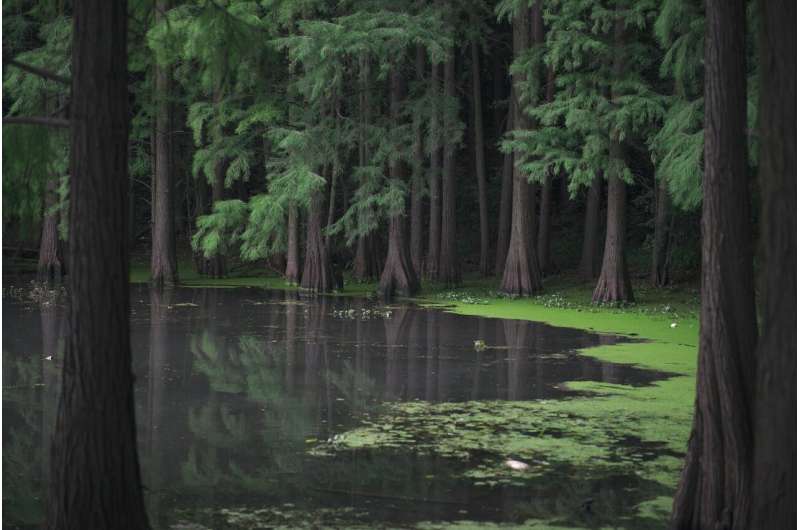Credit: CC0 Public Domain
Mangrove ecosystems are at particular risk of being polluted by plastic carried from rivers to the sea. Fifty-four percent of mangrove habitat is within 20 km of a river that discharges more than a ton of plastic waste a year into the ocean, according to a new paper published in the journal Science of the Total Environment. Mangroves in southeast Asia are especially threatened by river-borne plastic pollution, the researchers found.
The paper, written by scientists at GRID-Arendal and the University of Bergen, is the first global assessment of coastal environments' exposure to river-borne plastic pollution. The majority of plastic waste carried to sea by rivers ends up trapped along coastlines, but some types of coastal environments trap much more plastic than others. The researchers overlayed maps of coastal ecosystems with the most current information on the input of river-borne plastic to sea to find out which coastal environments have the potential to be most affected by plastic pollution originating on land.
The study found that river deltas receive 52 percent of river-borne plastic pollution, though they make up less than 1 percent of global coastlines. Rocky shores, in contrast, receive only 6 percent of the plastic pollution, though they make up 73 percent of global coastlines. No type of coastal environment is unaffected by river-borne plastic pollution.
The authors also assessed the exposure of mangroves, coral reefs, seagrass, and saltmarsh to rivers that discharge high amounts of plastic into the sea, in excess of one ton per year. Mangroves were the most affected, with 54 percent of mangrove areas located near at least one of these highly polluting rivers. Coral reefs were the least affected of the four habitats, with just 17 percent of coral reefs located within 20 km of a river that discharges more than a ton of plastic pollution a year.
Southeast Asia is more affected by river-borne plastic pollution than any other region in the world. Previous research has estimated that 86 percent of plastic pollution enters the ocean from Asian rivers. This is one reason why mangroves in southeast Asia are especially vulnerable to plastic pollution. Coral reefs in southeast Asia are also more affected by marine plastic than reefs in most other regions of the globe, the researchers found, while coral reefs in Australia appear to have escaped severe impact from plastic pollution.
"To effectively fight the growing problem of marine plastic pollution, we need to know how plastic waste is distributed and which ecosystems are most affected," said Peter Harris, lead author of the paper and managing director of GRID-Arendal. "Now that we know mangroves have a higher likelihood of being severely affected by plastic waste, leaders can take steps to protect these critical habitats."
The authors of the paper recommend that authorities prioritize reducing plastic pollution in areas where rivers enter the sea near sensitive and protected ecosystems.
More information: P.T. Harris et al, Exposure of coastal environments to river-sourced plastic pollution, Science of The Total Environment (2021). DOI: 10.1016/j.scitotenv.2021.145222
Journal information: Science of the Total Environment
Provided by GRID-Arendal
























